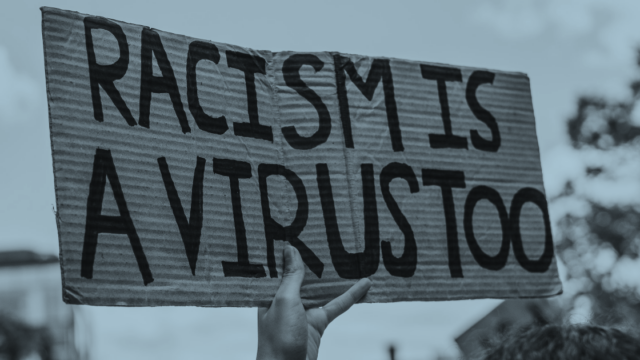Frontline Blog
Beyond health disparities: confronting cultural racism
November 2023

When you work in public health, it’s easy to focus on the problems: the inequities we’re trying to solve are massive and entirely out of proportion to the support the work receives. But when we’re talking to policymakers and the public, focusing exclusively on problems and barriers works against us for two reasons. For one thing, our audience is more motivated by solutions than problems. For another, many of the people we want to engage are not convinced there’s a problem in the first place.
Not only are some people in denial about racism and other society-level challenges, we are also being consistently manipulated into resisting equalizing and just solutions and policies. Cultural racism is the brand of racism responsible for this. Cultural racism describes how our society’s norms, values, beliefs, and standards validate and advantage white people while oppressing or marginalizing everyone else. When white Americans are polled, they tend to see less racism in contemporary U.S. society than do people from other racial minority groups – even though the data all point to persistent racial inequities across our society. Denying racism and its harm to society is contagious, becoming our dominant narrative on racism and any other form of oppression.
If we frame our challenges and objectives within common values and our collective hopes for the future, then our methods and goals will resonate with more Americans.
Racist ideologies are not just beliefs but are also made real every day in U.S. policy and institutions. And it is an ongoing cycle because racist ideology is seemingly justified by what Americans observe about each other without sufficient context or historical perspective.
We have worked really hard to understand and address structural barriers, but it’s not sufficient and does not absolve us from understanding cultural barriers, too. Consider these cultural barriers revealed by recent studies:
When cultural racism is this entrenched, how do we successfully do equity-focused and anti-racist work? One strategy is to adopt an asset-based perspective.
An asset-based perspective acknowledges that the wisdom and resilience of Black people and others who have been systematically oppressed in the U.S. are vital assets in eradicating cultural racism. An asset-based perspective can clear the clutter to help us envision health, equity, justice and longevity and plot our way in that direction.
Here are some ways to create an asset-based perspective that goes beyond the conceptual and becomes real:
1. Focus on the water, not the fish.
To extend a metaphor first introduced by Deena Hayes and the Racial Equity Institute and made popular by Camara Phyllis Jones: We need to focus on the toxic water the fish are swimming in as opposed to focusing on the fish (and their supposed fragility, bias, attitude, hair style, etc.).
2. Aim higher than reducing health disparities.
Make room for the (collective) vision for health, equity, justice, and longevity when making the case to address racial health disparities.
Discovery and discussion of racial health disparities are important to understanding population- and community-level health status and to protecting and promoting public health. However, focusing on the reduction of health disparities, usually roughly defined as reducing the difference between the group doing well and groups doing less well, falls short of our actual and collective vision.
Persistent racial disparities in life expectancy provide a striking example. Black and Indigenous people continue to have the lowest life expectancy in the U.S. but don’t aspire to merely live 76 or 77 years. We would all like to live to be 100 or more – that should be our goal. For EVERYONE. We need to pursue health and racial equity in view of our greater, bigger, better collective vision for health, well-being, and longevity.
3. Focus on common values and goals.
Years and years of messaging research remind us that we share “common values” with each other and that we should focus on them. This is a society in which people lack historical perspective and context for why they believe what they believe, especially about people different from themselves. As a result, when we only discuss society’s problems, we reinforce anti-Black and other racist, sexist, and classist ideologies. If we frame our challenges and objectives within common values and our collective hopes for the future, then our methods and goals will resonate with more Americans.


